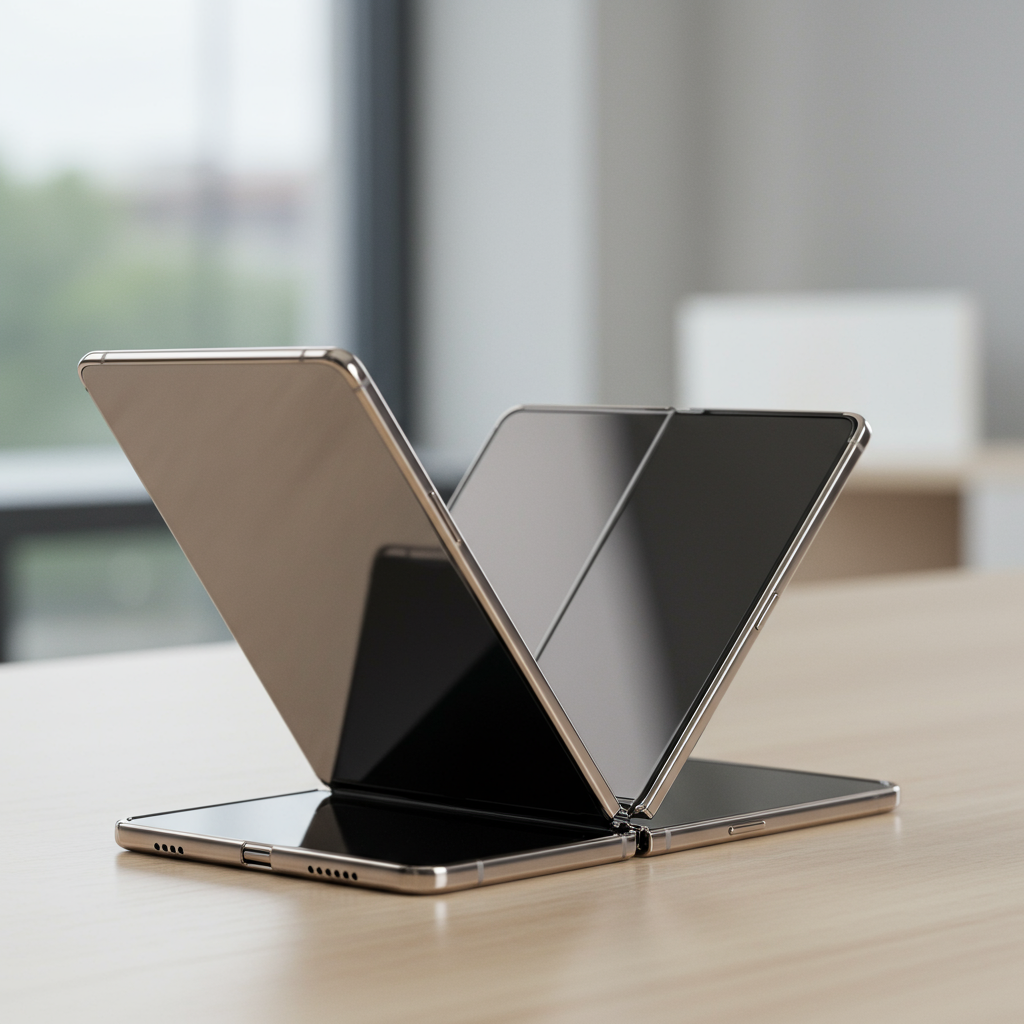Analyst Ming-Chi Kuo has just unveiled an extensive forecast for apple‘s future in head-mounted devices. This updated roadmap suggests Apple views the burgeoning market for headsets and smart glasses as the definitive “next major trend” in personal technology. According to Kuo’s detailed report, the tech giant is actively working on a minimum of seven distinct projects within this space. These initiatives span across two primary product families, with the first wave of new hardware slated to potentially debut as early as 2025.
Apple’s vision for Wearable Computing
Apple’s long-term vision for head-mounted wearables is ambitious. The company isn’t just building individual devices; it appears to be constructing a comprehensive ecosystem designed to integrate seamlessly with its existing hardware like the iPhone and Mac. This includes both high-end mixed reality headsets and more consumer-friendly smart glasses intended for everyday use. The sheer number of projects underway underscores Apple’s commitment to capturing significant market share in this emerging category over the next decade.
Decoding the Seven Devices
Kuo’s report breaks down the seven identified projects into two main groups: three variants belonging to the “Vision series” (like the current Vision Pro) and four distinct models falling under the “smart glasses” umbrella. While development timelines are confirmed for five of these devices, the remaining two currently have undetermined production schedules.
The Vision Series: Pro, Air, and Next-Gen
The Vision series represents Apple’s higher-end, mixed reality headset offerings. Kuo’s roadmap details three specific models within this line, each targeting a different stage or segment of the market.
Vision Pro Gets a 2025 Update
The first update to the existing Apple Vision Pro appears relatively modest. Kuo anticipates a new version primarily featuring an upgraded M5 chip, replacing the current M2. This updated Vision Pro is expected to enter mass production in the third quarter of 2025. Beyond the processor bump, other technical specifications are likely to remain largely unchanged. Kuo estimates that Apple plans to ship between 150,000 and 200,000 units of this refreshed model by the end of 2025. This suggests the M5 version is intended more for continued ecosystem development and maintaining a presence in the niche professional market rather than a major consumer push.
Introducing the Lighter, Cheaper Vision Air (2027)
The highly anticipated, more affordable sibling to the Vision Pro, potentially named “Vision Air,” is a key part of Apple’s future strategy for broader adoption. Kuo forecasts that this lighter variant is scheduled to begin mass production in the third quarter of 2027. Weight reduction is a major focus, with the Vision Air expected to be roughly 40% lighter than the original Vision Pro. This will likely be achieved by utilizing different materials like plastic and a magnesium alloy frame instead of the current model’s glass and titanium alloy construction. It’s also expected to be powered by a “highest-end” iPhone processor and feature fewer sensors compared to the premium Vision Pro, enabling a significantly lower price point. This model seems designed to bring the Vision experience to a wider audience.
Vision Pro Second Generation Takes Shape (2028)
Looking further ahead, a full second generation of the high-end Vision Pro is in the works. Kuo’s report places its mass production timeline in the second half of 2028. This next-gen headset is expected to feature a completely new design, incorporating a powerful “Mac-class” processor. Critically, it’s also predicted to be both cheaper and substantially lighter than the original Vision Pro, addressing some of the key criticisms of the current model. This indicates Apple’s long-term commitment to refining the premium mixed reality experience.
Apple Glasses: Beyond Vision Pro
Separate from the Vision headset line, Apple is reportedly developing several variants of more traditional “smart glasses.” These products appear aimed at integrating digital information and capabilities more subtly into everyday life, perhaps eventually rivaling the utility of smartphones or traditional eyewear.
Ray-Ban Challenger Arrives in 2027
Contrary to some earlier rumors suggesting a 2026 launch, Kuo now predicts that Apple’s first foray into the Ray-Ban-like smart glasses market won’t begin mass production until the second quarter of 2027. This initial model is expected to be display-free, functioning more like an advanced wearable audio and camera device. Key features may include multiple frame and material options, robust voice control, sophisticated gesture recognition for interaction, built-in photo and video recording capabilities, and AI-powered environmental sensing. The report mentions audio capabilities, though it’s unclear if these are integrated or rely on paired AirPods. Kuo is optimistic about this category’s potential, estimating initial shipments of 3-5 million units, suggesting Apple believes these glasses could become a mainstream product, potentially replacing some functions currently served by TWS earbuds or even smartphone cameras.
XR Glasses with Displays Emerge (2028)
Alongside the display-free smart glasses, Apple is also reportedly developing XR (Extended Reality) glasses that will incorporate a built-in display. The first model of these display-equipped glasses is slated for mass production in 2028. These glasses are expected to feature both gesture and voice control as primary interaction methods. The display technology will reportedly utilize Liquid Crystal on Silicon (LCoS) combined with waveguide technology. AI integration is highlighted as a critical component for the success of these XR glasses. Details regarding a second variant of display-equipped smart glasses are currently less clear in the report, with an unknown timeline.
A Paused Accessory and Shifting Priorities
Interestingly, Kuo notes that development work on a cable-bound display accessory designed to connect to devices like Macs and iPhones has been temporarily halted. This product, which was expected to use Birdbath optics and was previously scheduled for mass production in Q2 2026, faced challenges primarily related to weight. While currently on hold, the report suggests that development could potentially resume at a later date if these technical hurdles can be overcome or priorities shift.
Apple’s Strategic Long Game
Ming-Chi Kuo emphasizes that Apple’s strategic approach to head-mounted devices is clearly a “long game.” While competitors like Meta and Xiaomi have already launched smart glasses, Apple appears content to enter the market later. Kuo believes that Apple’s entry, particularly with its display-free smart glasses in 2027, will significantly boost the overall smart glasses market, potentially pushing total category shipments beyond 10 million units that year and cementing it as a major emerging trend. Despite arriving later, Apple aims to leapfrog the competition with superior technology and its integrated ecosystem strength. Kuo notes that current competitor products, while early, are likely to remain niche for the next couple of years due to ongoing limitations in technology and design. However, a key challenge Apple faces is developing the necessary robust, AI-powered software experience that will be crucial for intuitive user interaction across its diverse range of future head-mounted devices.
Frequently Asked Questions
What are the key differences between Apple’s planned Vision Pro, Vision Air, and Smart Glasses?
According to Ming-Chi Kuo’s report, Apple is developing distinct product lines. The Vision Pro and its second generation are high-end mixed reality headsets aimed at professional or enthusiast users, featuring powerful “Mac-class” processors. The Vision Air is a lighter, cheaper variant using an “iPhone-grade” chip, targeting broader consumer appeal with fewer sensors and different materials. Apple’s Smart Glasses are a separate category, starting with a display-free model focused on audio, camera, gesture, and AI, and later including display-equipped XR glasses for more integrated visual experiences, all designed for everyday wear unlike the Vision Pro’s immersive focus.
When does Apple plan to release these new head-mounted devices, according to the report?
Based on the analyst’s timeline, the first updated head-mounted device from Apple, an M5-equipped Vision Pro, is expected to begin mass production in late 2025. More significant new product launches are projected to start in 2027. The lighter Vision Air and the first display-free smart glasses are reportedly slated for mass production in Q3 2027 and Q2 2027, respectively. Further into the future, the second-generation Vision Pro and display-equipped XR glasses are anticipated to begin mass production in the second half of 2028.
Why is Apple reportedly delaying some new head-mounted devices until 2027 and beyond?
Kuo’s analysis suggests Apple is playing a “long game” strategy. Instead of rushing products to market to compete with earlier, potentially niche offerings from rivals like Meta, Apple appears to be taking the time to develop more refined hardware and, critically, the complex AI-powered software needed for a seamless user experience. This strategic delay allows Apple to potentially leapfrog current technology limitations and leverage its integrated ecosystem to launch products that could significantly expand the entire market category starting around 2027.
Conclusion
Ming-Chi Kuo’s latest forecast provides a compelling glimpse into Apple’s strategic direction for the next generation of personal computing. By reportedly developing a diverse portfolio ranging from refined mixed reality headsets like the Vision Pro updates and the lighter Vision Air, to mass-market focused smart glasses with or without displays, Apple is laying the groundwork for a significant push into head-mounted wearables. While key launches aren’t expected until 2027 and beyond, Apple’s patient approach, leveraging its hardware prowess and ecosystem, aims not just to compete but potentially to define the future of this market, transforming how we interact with technology in the coming years.
Word Count Check: 1038



